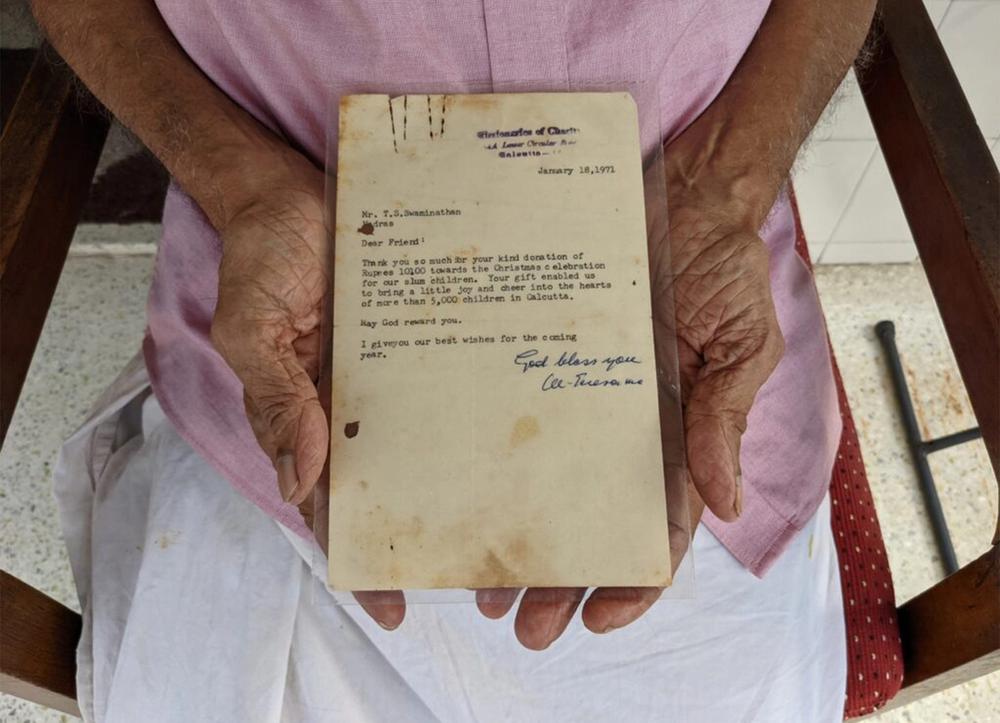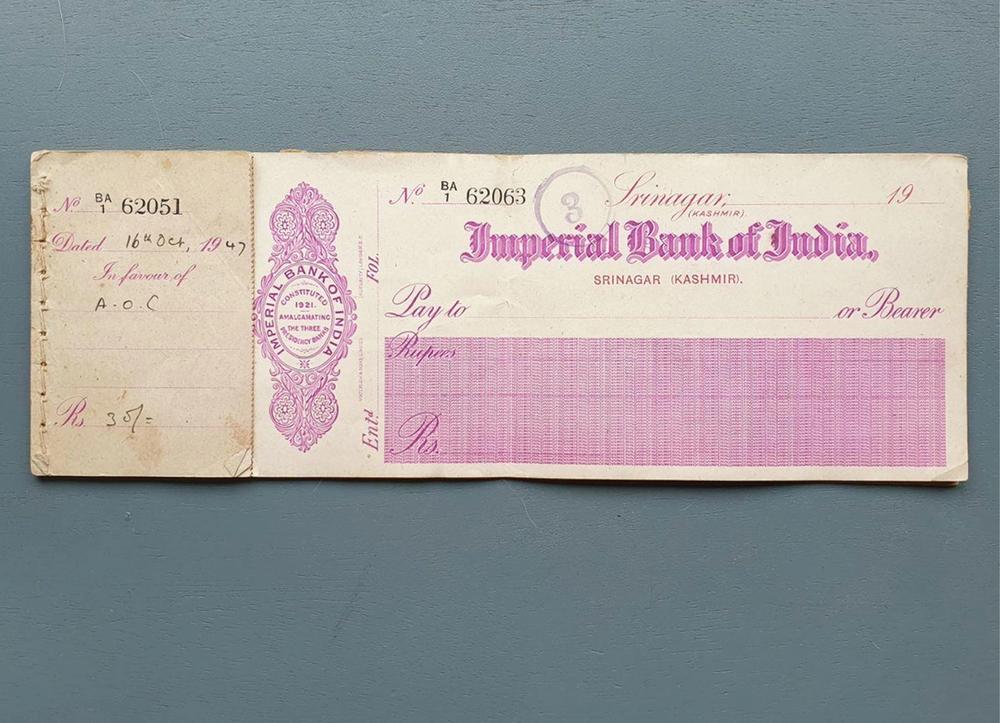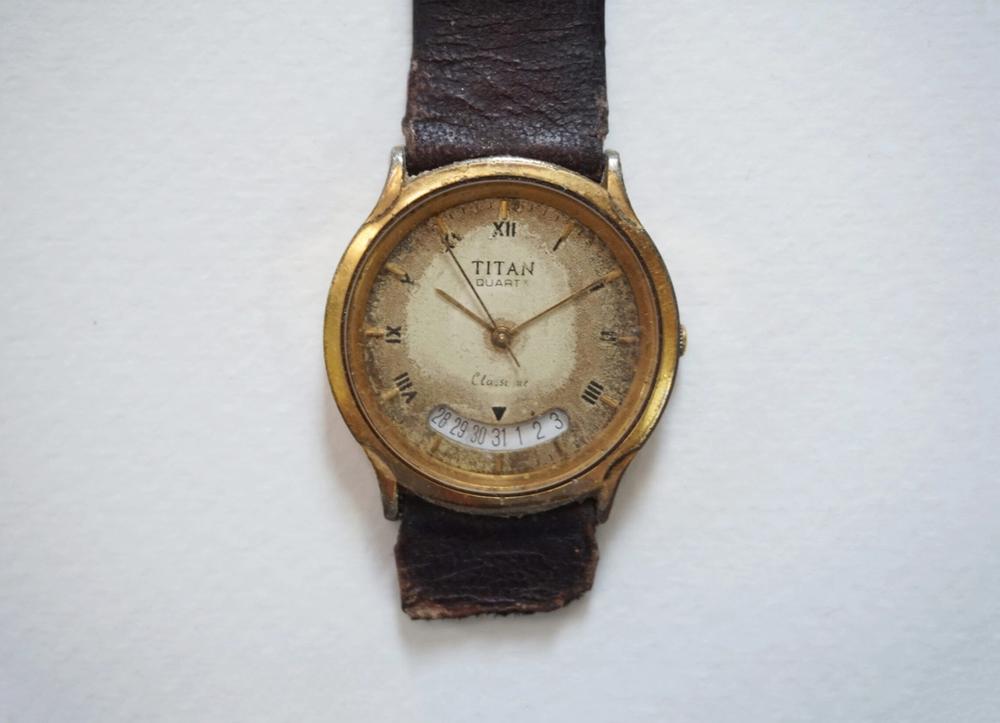A Digital Museum Tells Time-Honored Stories of the Indian Subcontinent Through Everyday Objects and Family Heirlooms
A gold dial Titan quartz wristwatch with a worn-out brown leather strap. A 32-caliber Colt pistol. A dekchi, or brass cooking pot for cooking the traditional rice dish biryani. A signed letter from Mother Teresa. An Imperial Bank of India checkbook. These are but five items in the collection of the Museum of Material Memory, an online repository of objects from across the Indian subcontinent, dating from or before the 1970s, including books, photographs, magazines, maps, jewelry, and family heirlooms.
Co-founded by friends Aanchal Malhotra and Navdha Malhotra (no relation) in 2017, the museum showcases user-submitted physical artifacts, and shares personal anecdotes about them, turning them into evocative—even tactile—digital stories. Think of it as a crowdsourced, upstart, Smithsonian-like archive for the South Asian region comprising Bangladesh, Bhutan, India, the Maldives, Nepal, Pakistan, and Sri Lanka. Blog-style in aesthetic, the simple site is a rare and welcome online environment to behold: It’s thoughtfully curated, well-edited, fascinating in breadth and depth, and full of eye-opening accounts that speak to too often ignored spaces, places, peoples, and histories.
While many of the objects featured might seem mundane on the surface, they are rich in backstory, showcasing the many cross-border (and cross-family) traditions, customs, and conventions of the vast region. Similar to how the British artist, writer, and master potter Edmund de Waal has unpacked stories of his Jewish family’s heritage through objects and materials—most notably in his 2010 book The Hare with Amber Eyes (now an exhibition of the same name, opening next week at New York’s Jewish Museum)—Aanchal and Navdha collect myriad narratives from across the Indian diaspora, resulting in a tapestry of memory, meaning, and understanding. We recently caught up with the enterprising duo to ask them about how and why they built the platform, and their ambitions for it going forward.
What led you to create the museum?
Aanchal Malhotra: I’m an oral historian, and work with objects that were carried across the newly laid border between India and Pakistan. That’s my work: what refugees carried, essentially. I’ve traveled for many years across India, Pakistan, and the U.K., looking at objects, and [contemplating] whether we can understand the notion of belonging to a particular land. The border between the two [South Asian] countries is contentious, and people cannot go back and forth so easily.
The concept [for the museum] took time to take root within people’s minds, because many of the objects [featured] were mundane. They were really banal things, like shoes and books and pens, that I had to invest importance in through conversations [with their owners]. Eventually, people from across the subcontinent started to get in touch with me, asking, “Can you come to see our objects?”
How did you two meet?
Aanchal: Navdha and I have been friends since high school. We have the same [last] name, we have a very similar background, and we care for not just things, but artifacts—and for the preservation of culture that may disappear. In 2017, when I published a book about objects that were carried across India and Pakistan’s borders during partition, I asked Navdha if we should do something about this together. We started small, with things in our own houses.
Navdha Malhotra: Both of us are really passionate about ensuring that [the museum] is democratic. It was founded on the fact that it should be crowdsourced. It’s also about the flexibility of: How do we empower people to tell their own stories?
“Material memory” isn’t such a common phrase, but perhaps it should be. How do you define it?
Aanchal: It’s in the subtitle of my book [Remnants of a Separation: A History of the Partition Through Material Memory]. That’s where we borrowed it from. It has been most frequently used, in my experience, with objects from the Holocaust and objects from the great wars. But for me, the terminology of “material memory” is so linked to oral history. It’s the memory that people embed within materiality based on their experiences, or their engagements, with an object. The encounter with any object is contingent on human intervention. What we put into it is what we receive from it.
Navdha: [The museum project] comes from this need to think about, to analyze, to really look at things around us, and wonder why something was important enough to be saved. At the end of the day, it comes down to emotions. It can’t just be important enough to save something because it’s nostalgic. There’s almost always a deeper story or a learned experience.
Right. That’s apparent in the first-person narrative that accompanies each object you feature. Anyone can submit items via Instagram or a form on the museum’s website. How do you select the pieces for inclusion, and what goes into curating the museum’s “collection,” so to speak?
Navdha: We’re making life a little bit hard for ourselves by trying to maintain very, very high standards. Slowly, the number of submissions has started increasing. For the last year and a half, we haven’t had to reach out and seek them. We’ve now reached a level where the project is organic—people just send us messages. Instagram remains the most popular way to get submissions. It usually takes us a few months to complete a story, based on people’s availability. Our hope and vision is that we can expand with a team and get more people involved, at least in the archiving and documentation process. But we haven’t started that yet. We work very closely with each person who has written to us.
I should add that we almost never say no to a submission. We’re just kind of hanging onto the democratic flag, and believe that [this project] should extend to everybody. Because we don’t take objects away [physically from their owners], though, it’s important to visually showcase each one in the best possible light, which means that we expect really good photographs. We like there to be at least ten to twelve photographs that we can work with—old photographs, new photographs. Since we're not putting these objects in a gallery for people to walk around, we believe they should at least be able to see them online and say, “Oh, wow, this is the size, and this is the color.”
It’s almost like being able to touch it.
Navdha: Absolutely.
What do you hope these objects reveal?
Aanchal: Something about the person who wrote about them, and about the family that the object comes from. The most beautiful process happens when people start to write their story, because they’re [often] compelled to interview a family member. What ends up happening when generations speak with this kind of seriousness is that stories you haven’t heard enough [come out].
South Asia is moving to a modality and a pace that is far faster than in the West. We’re also emulating the West, which means that intergenerational conversation is dissipating quickly. The stories in the museum activate thoughts of family life. When we post a story about an object, it almost always takes on another story. Another story appears from someone else.
We did a story a couple of months ago about this cutting utensil [that’s common] in Bengali kitchens. It was used specifically for fish. When we posted it, we got responses from across not just India, but Pakistan, Sri Lanka, Nepal, and other parts of the diaspora, saying, “Oh, in our language, it’s called this.” It was incredible. This is what we hope to do: make a web with countries of the subcontinent that cannot join physically. The digital [museum] is a great, democratic way to build connections between ordinary people that don’t have anything to do with political or national allegiance.
It becomes a form of cultural diplomacy.
Navdha: That’s our hidden agenda for all of it. If people who have made the effort of reaching out and writing a piece walk away feeling that they learned something about themselves and their family that they didn’t know previously—
Aanchal: I love it when people feel seen. [The project] is an archive of visibility, because it puts you on a platform, which is respectable. Your family history is visible, and it is important. It’s not just data.
Is there a particular standout object or story that comes to mind?
Aanchal: There was a story where a person [named Shubham Das] found these old Bengali novels. He didn’t know anything about them, and he knew that his father had been married once before. But his father never spoke about his first wife, who had died. The young man found out that these novels had been given to the couple on their wedding day. It prompted a heartwarming, very open conversation between him and his father about the resentment [over] the death of his spouse, and also how to move on in life, and about his remarriage. It was a [moment] of incredible growth in a family, all prompted by the curiosity of a boy who couldn’t let these novels just pass him by.
Do you have any plans of expanding this “material memory” project beyond the borders of the subcontinent, or to find partners in other countries to create extensions of what you’re doing?
Navdha: These countries are so vast, and there’s so much that we’re still learning about them. We come from Northern India [which is where most of our submissions come from]. We’re struggling to get stories from Southern India. I’m constantly reaching out to people [there, and in Nepal, Sri Lanka, and Pakistan], randomly going, “Listen, give me something.”
I feel like [the region of] Punjab in India gets all the attention, and too much representation. [Aanchal and I] have such a common last name that people immediately know where we’re from, and associate the museum to that Punjabi background. I think that’s a bit unfair. We’re trying to break out of that, and to have as much representation—not just in geographic diversity, but also in caste, class, and ethnicity—as possible.
Do you have any plans of physicalizing the museum?
Navdha: Since day one, we’ve wanted to organize pop-ups. More than anything, to set up a space where people can come, interact, and engage with the objects. We’d like to curate something where people have written the [wall texts], and the owners of the objects can be present. We really want to be a platform for people to share their life stories.





